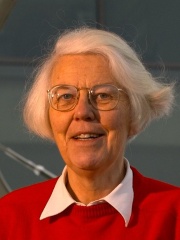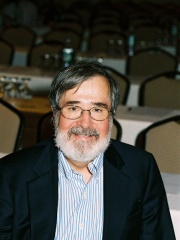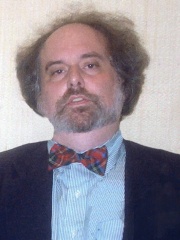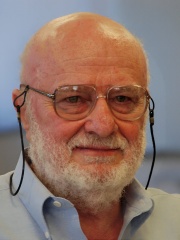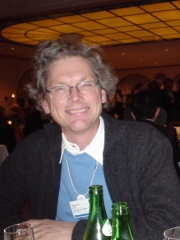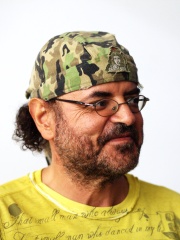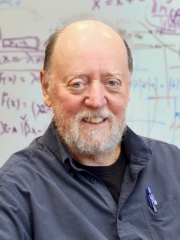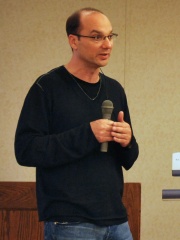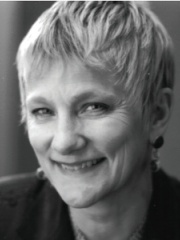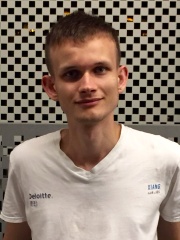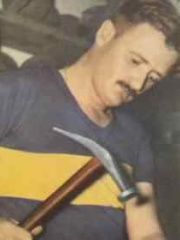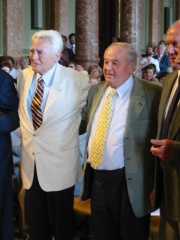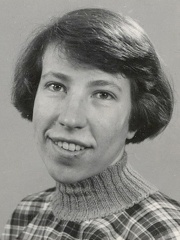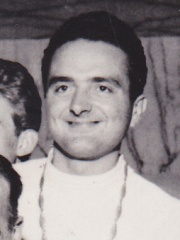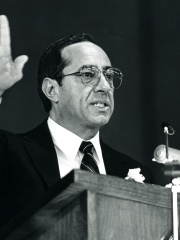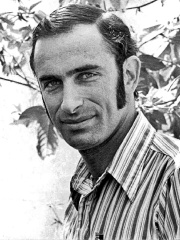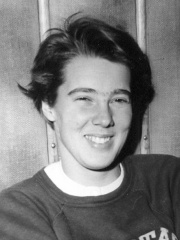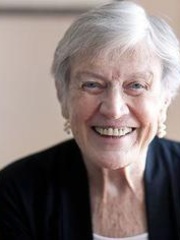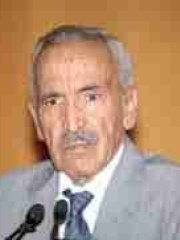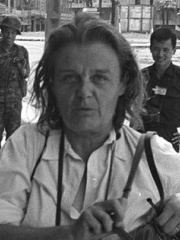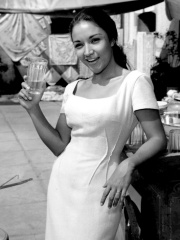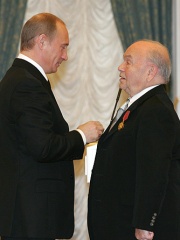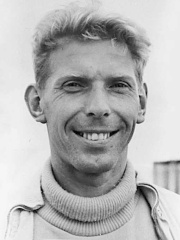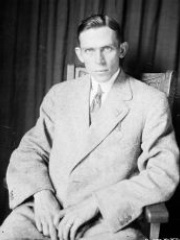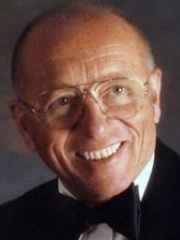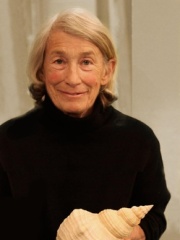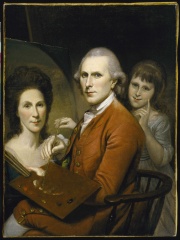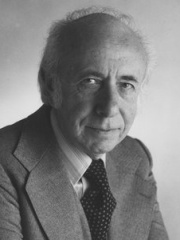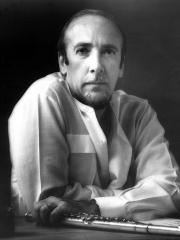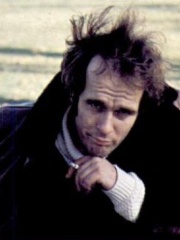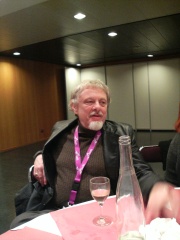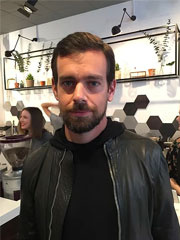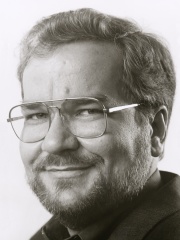COMPUTER SCIENTIST
Robert Taylor
1932 - 2017
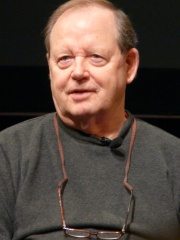
 Robert Taylor
Robert Taylor
Robert William Taylor (February 10, 1932 – April 13, 2017), known as Bob Taylor, was an American Internet pioneer, who led teams that made major contributions to the personal computer, and other related technologies. He was director of ARPA's Information Processing Techniques Office from 1965 through 1969, founder and later manager of Xerox PARC's Computer Science Laboratory from 1970 through 1983, and founder and manager of Digital Equipment Corporation's Systems Research Center until 1996. Uniquely, Taylor had no formal academic training or research experience in computer science; Severo Ornstein likened Taylor to a "concert pianist without fingers", a perception reaffirmed by historian Leslie Berlin: "Taylor could hear a faint melody in the distance, but he could not play it himself. Read more on Wikipedia
His biography is available in 22 different languages on Wikipedia. Robert Taylor is the 133rd most popular computer scientist (down from 110th in 2024), the 7,396th most popular biography from United States (down from 5,912th in 2019) and the 77th most popular American Computer Scientist.
Memorability Metrics
Page views of Robert Taylor by language
Among COMPUTER SCIENTISTS
Among computer scientists, Robert Taylor ranks 133 out of 245. Before him are Karen Spärck Jones, Peter Norton, Edmund M. Clarke, E. Allen Emerson, Abraham Lempel, and Bill Joy. After him are Christos Papadimitriou, Jack Dongarra, Andy Rubin, Paul G. Comba, Anita Borg, and Vitalik Buterin.
Most Popular Computer Scientists in Wikipedia
Go to all RankingsKaren Spärck Jones
1935 - 2007
HPI: 56.43
Rank: 127
Peter Norton
1943 - Present
HPI: 56.22
Rank: 128
Edmund M. Clarke
1945 - 2020
HPI: 56.22
Rank: 129
E. Allen Emerson
1954 - 2024
HPI: 56.20
Rank: 130
Abraham Lempel
1936 - 2023
HPI: 56.15
Rank: 131
Bill Joy
1954 - Present
HPI: 56.06
Rank: 132
Robert Taylor
1932 - 2017
HPI: 55.94
Rank: 133
Christos Papadimitriou
1949 - Present
HPI: 55.80
Rank: 134
Jack Dongarra
1950 - Present
HPI: 55.74
Rank: 135
Andy Rubin
1963 - Present
HPI: 55.57
Rank: 136
Paul G. Comba
1926 - 2017
HPI: 55.45
Rank: 137
Anita Borg
1949 - 2003
HPI: 55.23
Rank: 138
Vitalik Buterin
1994 - Present
HPI: 55.17
Rank: 139
Contemporaries
Among people born in 1932, Robert Taylor ranks 355. Before him are Javier Ambrois, Antal Bolvári, Walter Kollmann, Irma Johansson, Nino Defilippis, and Jan Jindra. After him are Gábor Delneky, Katy Bødtger, Mario Cuomo, Paul R. Ehrlich, Ann-Sofi Pettersson, and Ludovico Avio. Among people deceased in 2017, Robert Taylor ranks 370. Before him are Robert Alt, Paula Fox, Smail Hamdani, Clare Hollingworth, Walter Kollmann, and Míriam Colón. After him are Katy Bødtger, Vladimir Shainsky, Ezio Pascutti, Ivar Aronsson, Jacques Simon, and Patrick Nève.
Others Born in 1932
Go to all RankingsJavier Ambrois
SOCCER PLAYER
1932 - 1975
HPI: 56.05
Rank: 349
Antal Bolvári
ATHLETE
1932 - 2019
HPI: 56.04
Rank: 350
Walter Kollmann
SOCCER PLAYER
1932 - 2017
HPI: 55.99
Rank: 351
Irma Johansson
ATHLETE
1932 - Present
HPI: 55.99
Rank: 352
Nino Defilippis
CYCLIST
1932 - 2010
HPI: 55.97
Rank: 353
Jan Jindra
ATHLETE
1932 - 2021
HPI: 55.95
Rank: 354
Robert Taylor
COMPUTER SCIENTIST
1932 - 2017
HPI: 55.94
Rank: 355
Gábor Delneky
ATHLETE
1932 - 2008
HPI: 55.93
Rank: 356
Katy Bødtger
SINGER
1932 - 2017
HPI: 55.93
Rank: 357
Mario Cuomo
POLITICIAN
1932 - 2015
HPI: 55.92
Rank: 358
Paul R. Ehrlich
BIOLOGIST
1932 - Present
HPI: 55.85
Rank: 359
Ann-Sofi Pettersson
GYMNAST
1932 - Present
HPI: 55.80
Rank: 360
Ludovico Avio
SOCCER PLAYER
1932 - 1996
HPI: 55.76
Rank: 361
Others Deceased in 2017
Go to all RankingsRobert Alt
ATHLETE
1927 - 2017
HPI: 56.19
Rank: 364
Paula Fox
WRITER
1923 - 2017
HPI: 56.09
Rank: 365
Smail Hamdani
POLITICIAN
1930 - 2017
HPI: 56.08
Rank: 366
Clare Hollingworth
WRITER
1911 - 2017
HPI: 55.99
Rank: 367
Walter Kollmann
SOCCER PLAYER
1932 - 2017
HPI: 55.99
Rank: 368
Míriam Colón
ACTOR
1936 - 2017
HPI: 55.96
Rank: 369
Robert Taylor
COMPUTER SCIENTIST
1932 - 2017
HPI: 55.94
Rank: 370
Katy Bødtger
SINGER
1932 - 2017
HPI: 55.93
Rank: 371
Vladimir Shainsky
COMPOSER
1925 - 2017
HPI: 55.91
Rank: 372
Ezio Pascutti
COACH
1937 - 2017
HPI: 55.87
Rank: 373
Ivar Aronsson
ATHLETE
1928 - 2017
HPI: 55.87
Rank: 374
Jacques Simon
SOCCER PLAYER
1941 - 2017
HPI: 55.86
Rank: 375
Patrick Nève
RACING DRIVER
1949 - 2017
HPI: 55.85
Rank: 376
In United States
Among people born in United States, Robert Taylor ranks 7,398 out of 20,380. Before him are Mel Sheppard (1883), Joseph Engelberger (1925), Marty Balin (1942), Sean Patrick Flanery (1965), Sophia Bush (1982), and Mary Oliver (1935). After him are Charles Willson Peale (1741), Roger McGuinn (1942), Morton Gould (1913), Herbie Mann (1930), Tim Hardin (1941), and Norman Spinrad (1940).
Others born in United States
Go to all RankingsMel Sheppard
ATHLETE
1883 - 1942
HPI: 55.95
Rank: 7,392
Joseph Engelberger
INVENTOR
1925 - 2015
HPI: 55.95
Rank: 7,393
Marty Balin
MUSICIAN
1942 - 2018
HPI: 55.95
Rank: 7,394
Sean Patrick Flanery
ACTOR
1965 - Present
HPI: 55.95
Rank: 7,395
Sophia Bush
ACTOR
1982 - Present
HPI: 55.95
Rank: 7,396
Mary Oliver
WRITER
1935 - 2019
HPI: 55.94
Rank: 7,397
Robert Taylor
COMPUTER SCIENTIST
1932 - 2017
HPI: 55.94
Rank: 7,398
Charles Willson Peale
PAINTER
1741 - 1827
HPI: 55.94
Rank: 7,399
Roger McGuinn
SINGER
1942 - Present
HPI: 55.94
Rank: 7,400
Morton Gould
COMPOSER
1913 - 1996
HPI: 55.94
Rank: 7,401
Herbie Mann
MUSICIAN
1930 - 2003
HPI: 55.94
Rank: 7,402
Tim Hardin
MUSICIAN
1941 - 1980
HPI: 55.94
Rank: 7,403
Norman Spinrad
WRITER
1940 - Present
HPI: 55.94
Rank: 7,404
Among COMPUTER SCIENTISTS In United States
Among computer scientists born in United States, Robert Taylor ranks 77. Before him are Gil Amelio (1943), David A. Huffman (1925), Peter Norton (1943), Edmund M. Clarke (1945), E. Allen Emerson (1954), and Bill Joy (1954). After him are Jack Dongarra (1950), Andy Rubin (1963), Anita Borg (1949), James Rumbaugh (1947), Jack Dorsey (1976), and Phil Zimmermann (1954).
Gil Amelio
1943 - Present
HPI: 56.60
Rank: 71
David A. Huffman
1925 - 1999
HPI: 56.53
Rank: 72
Peter Norton
1943 - Present
HPI: 56.22
Rank: 73
Edmund M. Clarke
1945 - 2020
HPI: 56.22
Rank: 74
E. Allen Emerson
1954 - 2024
HPI: 56.20
Rank: 75
Bill Joy
1954 - Present
HPI: 56.06
Rank: 76
Robert Taylor
1932 - 2017
HPI: 55.94
Rank: 77
Jack Dongarra
1950 - Present
HPI: 55.74
Rank: 78
Andy Rubin
1963 - Present
HPI: 55.57
Rank: 79
Anita Borg
1949 - 2003
HPI: 55.23
Rank: 80
James Rumbaugh
1947 - Present
HPI: 55.15
Rank: 81
Jack Dorsey
1976 - Present
HPI: 54.89
Rank: 82
Phil Zimmermann
1954 - Present
HPI: 54.87
Rank: 83
